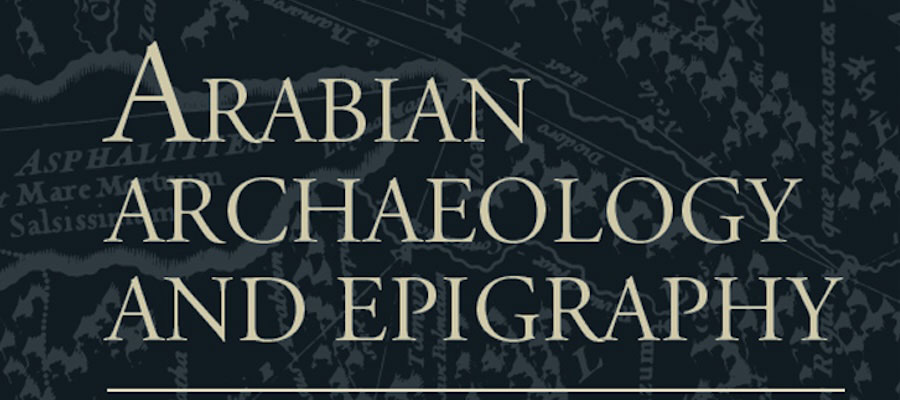New Issue of Arabian Archaeology and Epigraphy, volume 34, issue 1 (November 2023).
CONTENTS INCLUDE
The chronology of Julianos Church, Umm el-Jimal, Jordan: AMS radiocarbon dates of its synthronon
Khaled Al-Bashaireh and Susanne Lindauer
An ongoing long debate on the chronology of Julianos Church, Umm el-Jimal, northeast Jordan, started in the early 20th century. It was claimed to be the earliest dated church (ad 344) by an inscription not found in situ. After five decades, it was proven that the inscription was mistakenly associated to the church, and ‘after the start of the fifth century ad’ was suggested as a new date. It is still argued that this new date is an early one, and the church might have been built in the late fifth to early sixth century ad when compared to the dated churches of sites surrounding Umm el-Jimal. This research aims to reconstruct the chronology of Julianos Church by AMS radiocarbon dating organic inclusions collected from mortar samples from the pavement, the coats of the tiers of the bench and the steps of the throne of the synthronon. The AMS radiocarbon dates agree with the archaeological data in that Julianos Church was renovated after its good-quality initial construction. Hence, the last decades of the sixth century ad (565–607) are interpreted to be the most probable date for the renovation of the synthronon, while the fifth century ad, probably the second half (465–507 ad), might be the construction date of the old mosaic floor (i.e., the church).
New Byzantine inscriptions from the Land of Moab
Musallam R. Al-Rawahneh and Alexandra de Varax
This study describes seven new Byzantine inscriptions discovered in Moab (Governorate of al-Karak, southern Jordan), which was part of Provincia Arabia and Palaestina Tertia during the Roman Empire. The Byzantine tombstone inscriptions in Moab date from the fifth to the mid-seventh century ad. The inscriptions follow the typical formula of Byzantine Christian epitaphs, including the name of the deceased, the father's name and age. Some of them are dated. These newly discovered names not only contribute to the corpus of common names used in the region but also introduce some new ones.
